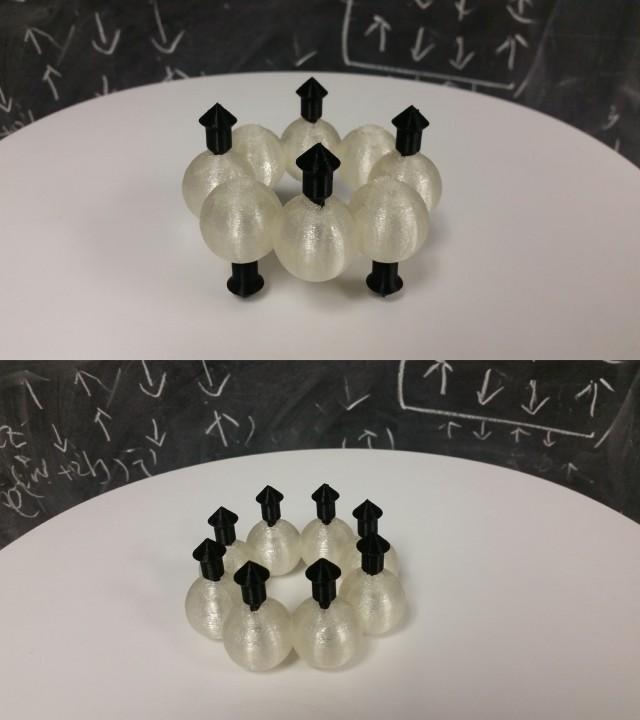
1D Ising Model and the Phase Transition
Description
In a flurry of arrows denoting the spin-up or spin-down status of particles in a spin-system, lies the properties surrounding a phase-transition point (like when ice changes into water) at the quantum (or tiny) scale. Cooling down to near absolute zero, our 1D Ising model reveals such properties.
This 3D-printed version of a theoretical 1D Ising model with periodic boundary conditions is shown in both the antiferromagnetic (above) and ferromagnetic ground state (below). I wrote C++ based quantum Monte Carlo simulations utilizing this model. This aided my advisors’ (Dr. Mark Srednicki and Ph.D. candidate Keith Fratus) research on the compatibility between eigenstate thermalization and spontaneous symmetry breaking. 3D-printed by UCSB’s Makerbot Replicator 2 with the help of Instructional Lab Assistant Zak Espley.










